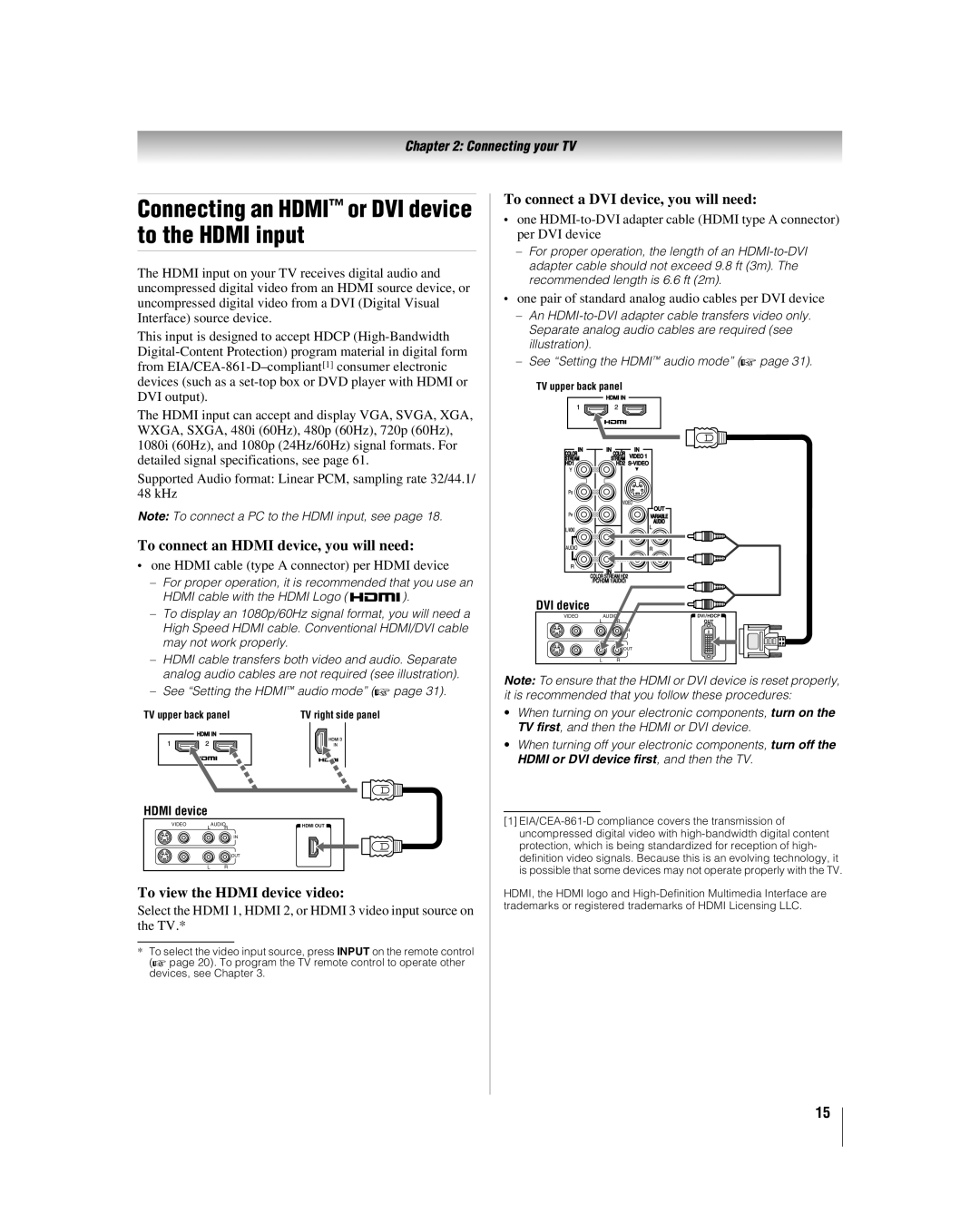
Chapter 2: Connecting your TV
Connecting an HDMI™ or DVI device to the HDMI input
The HDMI input on your TV receives digital audio and uncompressed digital video from an HDMI source device, or uncompressed digital video from a DVI (Digital Visual Interface) source device.
This input is designed to accept HDCP
The HDMI input can accept and display VGA, SVGA, XGA, WXGA, SXGA, 480i (60Hz), 480p (60Hz), 720p (60Hz), 1080i (60Hz), and 1080p (24Hz/60Hz) signal formats. For detailed signal specifications, see page 61.
Supported Audio format: Linear PCM, sampling rate 32/44.1/ 48 kHz
Note: To connect a PC to the HDMI input, see page 18.
To connect an HDMI device, you will need:
•one HDMI cable (type A connector) per HDMI device
–For proper operation, it is recommended that you use an
HDMI cable with the HDMI Logo ( ![]()
![]()
![]()
![]() ).
).
–To display an 1080p/60Hz signal format, you will need a High Speed HDMI cable. Conventional HDMI/DVI cable may not work properly.
–HDMI cable transfers both video and audio. Separate analog audio cables are not required (see illustration).
–See “Setting the HDMI™ audio mode” (- page 31).
TV upper back panel | TV right side panel | ||||||||||||||
|
|
|
|
|
|
|
|
|
|
|
|
|
|
|
|
|
|
|
|
|
|
|
|
|
|
|
|
|
|
|
|
|
|
|
|
|
|
|
|
|
|
|
|
|
|
|
|
|
|
|
|
|
|
|
|
|
|
|
|
|
|
|
|
|
|
|
|
|
|
|
|
|
|
|
|
|
|
|
|
HDMI device
VIDEO | AUDIO |
| |
HDMI OUT | |||
L | R | ||
|
![]() IN IN
IN IN
![]() OUT
OUT
LR
To view the HDMI device video:
Select the HDMI 1, HDMI 2, or HDMI 3 video input source on the TV.*
*To select the video input source, press INPUT on the remote control (- page 20). To program the TV remote control to operate other devices, see Chapter 3.
To connect a DVI device, you will need:
•one
–For proper operation, the length of an
•one pair of standard analog audio cables per DVI device
–An
–See “Setting the HDMI™ audio mode” (- page 31).
TV upper back panel
DVI device
VIDEO | AUDIO | DVI/HDCP |
L | R | OUT |
| IN IN |
|
| OUT |
L | R |
Note: To ensure that the HDMI or DVI device is reset properly, it is recommended that you follow these procedures:
•When turning on your electronic components, turn on the TV first, and then the HDMI or DVI device.
•When turning off your electronic components, turn off the HDMI or DVI device first, and then the TV.
[1]
HDMI, the HDMI logo and
15
